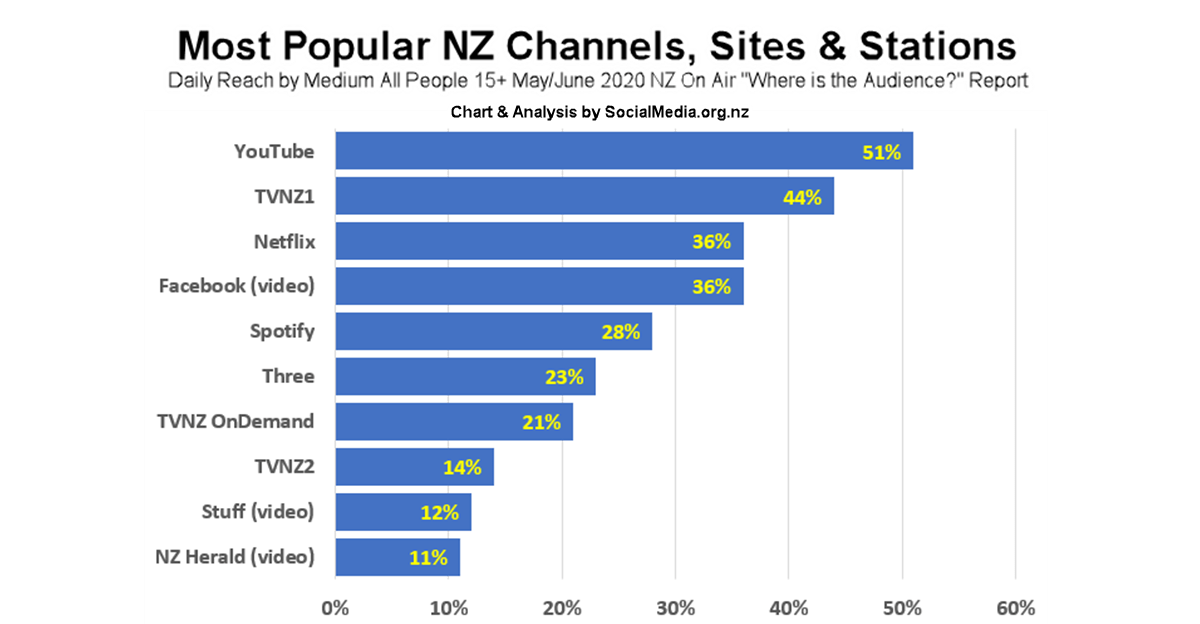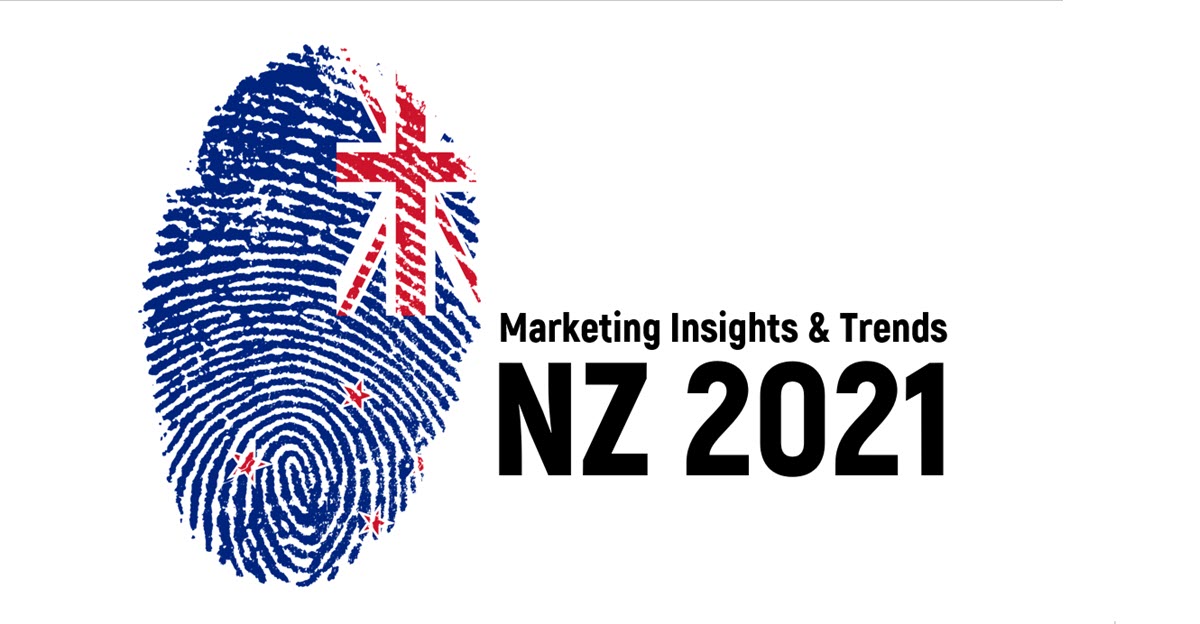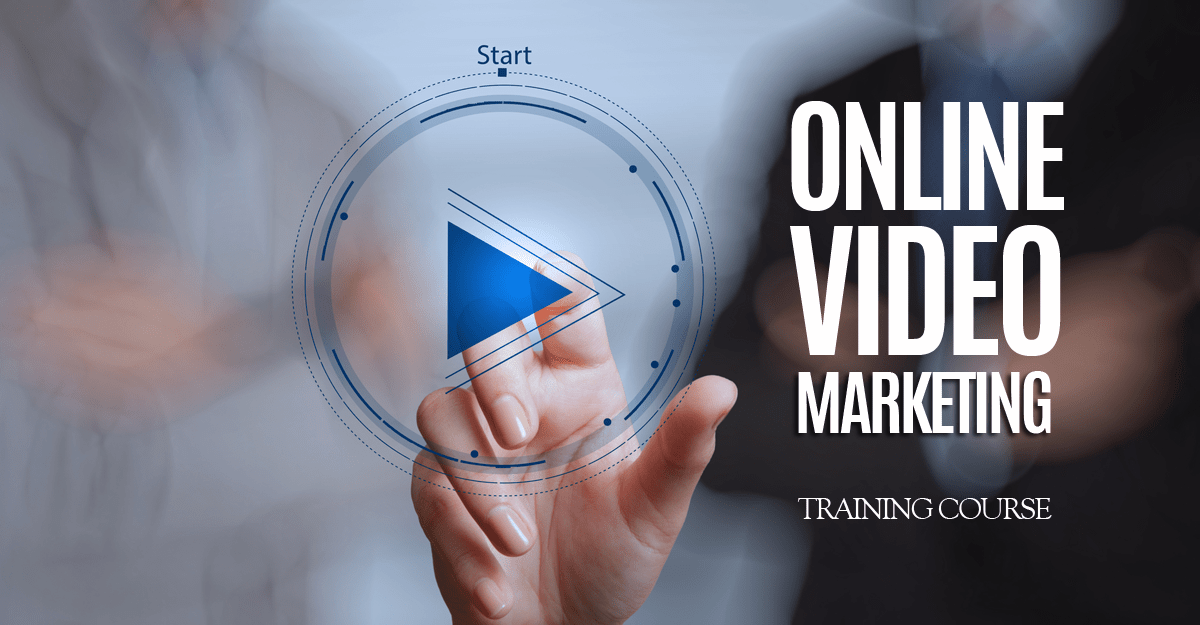It’s official — digital media now leads the way in New Zealand, holding down four of the top five slots for the most popular NZ channels, sites or stations in 2020:
#1 YouTube 51%
#2 TVNZ1 44%
#3= Facebook (video) 36%
#3= Netflix 36%
#5 Spotify 28%
#6 Three 23%
#7 TVNZ OnDemand 21%
#8 TVNZ2 14%
#9 Stuff (video) 12%
#10 NZ Herald (video) 11%
These findings, from the just-released NZ On Air “Where Are the Audiences?” Report 2020, show a dramatic leap in online consumption behaviours since the last survey, in 2018.
- Streaming video (i.e. Netflix, Neon, Disney+, Amazon Prime, Apple TV+ etc.) now reaches 61% of Kiwis each day, up by 42% from 2018.
- Other online video (e.g. YouTube and Facebook) reaches 60%, an increase of 30%.
- Streamed music reaches 44% of us while online gaming accounts for 36% of NZ audiences.
- Meanwhile, Broadcast Radio reaches 50% of Kiwis each day, Sky TV reaches 36% and Free-to-Air Television reaches 35%.
Kiwis aren’t just choosing digital media more frequently — they are spending more time consuming digital content as well:
- streaming video 95 minutes per day
- broadcast radio 83 minutes per day
- online video 67 minutes per day
- free to air TV 59 minutes per day
Okay, to be fair and objective, we should point out that this study was conducted on behalf of NZ On Air, whose territory is broadcast media, so our print, social and web display colleagues are only represented in terms of their video or audio offerings.
Even so, the NZ On Air Report reflects a significant turning point for NZ media consumption, as traditional broadcast media offerings are displaced by their digital competitors.
As the New Zealand Herald noted in its story on the NZ ON Air Report, the findings make for “sobering reading“.
In a defacto acknowledgement of the changed media environment, in October ThinkTV and Nielsen will be introducing a new system which is designed to measure television audiences across multiple platforms, screens and devices.
The rollout over 12-18 months of 500 streaming meters across the existing Nielsen Television Audience Measurement panel is designed to show how many people are viewing, and how much time is spent, on broadcaster Video On Demand sites and through other video platforms such as YouTube and Netflix.
If you’ve previously relied on traditional media to promote your products or services, the developments above should give you a wakeup call: Kiwis now have split loyalties between traditional and digital media.
Consumers wouldn’t see it that way, of course. They are just going to where the most desirable content is.
If you consider the situation objectively, viewers are choosing between:
- linear television — any program you want, as long as it’s the program that the networks have chosen to broadcast at the exact moment that you want to watch;
- online video — billions of short clips for you to consume in a matter of moments (or hours), searchable by a wide range of criteria, to fit whatever mood you’re in (and often extremely addictive); and
- streaming television — millions of hours of TV shows and movies for you to choose from, and YOU get to choose.
Something of a no-brainer, really.
WHERE TO LEARN MORE ABOUT YOUR DIGITAL OPTIONS
If you’d like to know more about these and other upcoming developments that will impact your marketing efforts in the year ahead, check out:
Marketing Insights & Trends
For a peek into the future, check out our NZ Marketing Insights & Trends Report 2021.
Online Video
If you would like to know more about marketing through online video (particularly YouTube and Facebook), take a look at our freshly-updated Online Video Marketing course.
Digital Marketing 101

If you’re new to digital marketing, we have a comprehensive beginners’ course that will tell you what you need to know.
Advanced Digital Marketing

If you are comfortable that you understand the essentials of digital marketing but just need a refresher course, we can help you there as well, with our Advanced Digital Marketing course.
.


